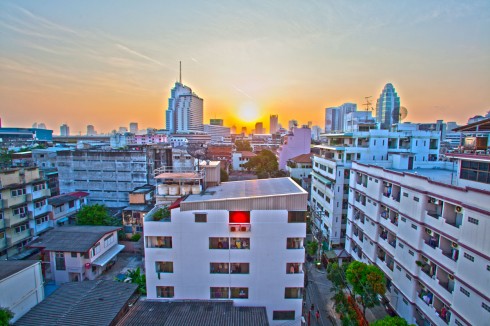 Posted March 10, 2011 – Adobe Photoshop CS5 will be the eleventh HDR software to be tested and reviewed by Captain Kimo. Adobe Photoshop is the leader in image editing software so it’s no surprised that Adobe has their own process for creating high dynamic range images. Adobe might be the leader in image editing but their HDR capabilities fall short compared to the other HDR programs that I’ve tested.
Posted March 10, 2011 – Adobe Photoshop CS5 will be the eleventh HDR software to be tested and reviewed by Captain Kimo. Adobe Photoshop is the leader in image editing software so it’s no surprised that Adobe has their own process for creating high dynamic range images. Adobe might be the leader in image editing but their HDR capabilities fall short compared to the other HDR programs that I’ve tested.
Operating System – Windows & MAC
Price – $699.99 USD
Standalone/Plugin/Both – Standalone
Processing RAW files – Yes
HDR from Single RAW – No
Overall Speed – Average to Fast
Visit Official Website – http://www.adobe.com
Go to Adobe Photoshop Download Page
Adobe Photoshop CS5’s Merge to HDR function is an upgrade of the original HDR tool provided in Photoshop CS3 and CS4. The original HDR features found in the older versions was something not even worth mentioning because of it’s lack of functionality. In the latest updated version found in CS5 the Merge to HDR tool went through a big upgrade with some much need features. But as much as it has improved, it still doesn’t compare to the other HDR programs.
Creating high dynamic range images with Adobe CS5 is pretty easy. Once you have Adobe Photoshop open all you need to do is go to the top menu click on File/Automate/Merge to HDR Pro… this will give you a window where you can load your exposures. You must load 2 or more exposures, Photoshop will not allow you to create an HDR image from a single file. However there is a way around that, I’ll explain how to later.
When you’ve loaded all your exposures you have the option to let Photoshop Align your images. You can do this by clicking on the check box on the bottom left of the window. To merge your exposures simply click the OK button. When Photoshop has finished merging the images you’ll be taken automatically to the tone mapping window. In this window you can let Photoshop remove any ghosting in your image by clicking the Remove ghosts check box.
The tone mapping options in Adobe Photoshop CS5 is very limited but there’s enough to produce some decent HDR images. Photoshop produces more realistic images best. Trying to create anything dynamic with the tone mapping options provided only gets you unwanted results, especially when adding saturation to the image. When it comes to color with HDR, Photoshop handles it in a very dull way, at least within the tone mapping window.
Once you’re done tone mapping, click the Create HDR image button to let Photoshop process your HDR image. When Photoshop is done processing the HDR image you’ll be taken to the standard Photoshop window where you can begin post processing your photo. This is probably the biggest benefit of using Photoshop to create your HDR images. It can all be done in a single program.
As I mentioned earlier, Adobe Photoshop doesn’t have the ability to tone map a single raw file. However you can achieve the same HDR result by using the HDR Toning feature found under the top menu Image/Adjustments/HDR Toning… This function can be used at anytime, even on JPG images. I use this feature frequently to simulate the HDR look instead of going into an HDR program. I find this function great for achieving low dynamic range results for filling in foreground detail and tonal range in bright areas.
When it comes to high dynamic range I feel Adobe Photoshop still has a long way to go. If you’re looking to buy Adobe Photoshop CS5 just for the HDR feature, save your money. Instead consider buying Adobe Elements for image editing and a separate HDR program for creating high dynamic range photos.
However if you’re buying Adobe Photoshop as an image editing program than you made the right choice. Adobe Photoshop is worth the price in the long run when compared to Photoshop Elements. It’s also noticeably faster at processing images. If you do get Adobe Photoshop, expect to purchase an HDR application. I feel you’ll find the results from the Merge to HDR tool lacking the same visual interest sought after by most folks interested in producing high dynamic range images.




